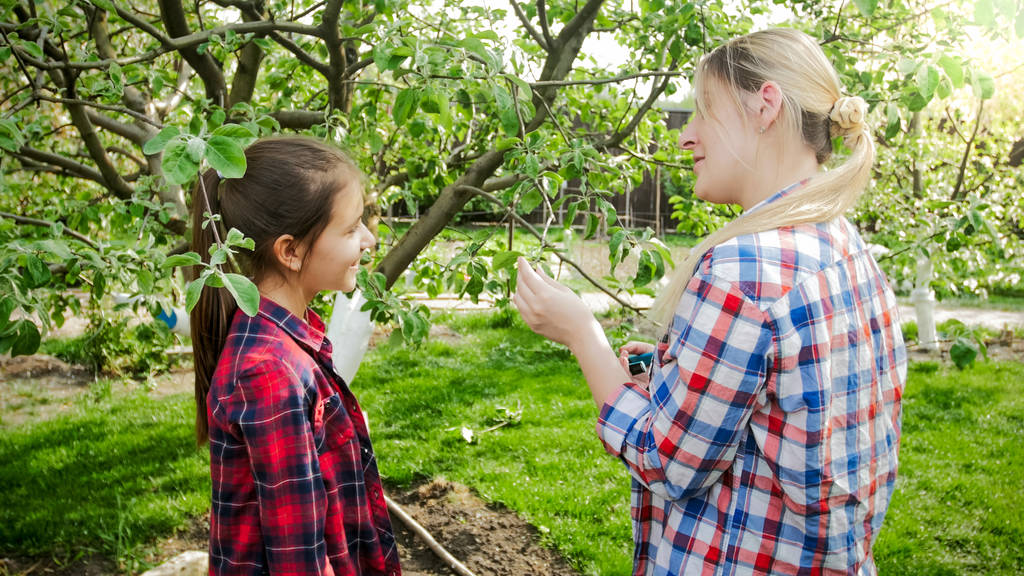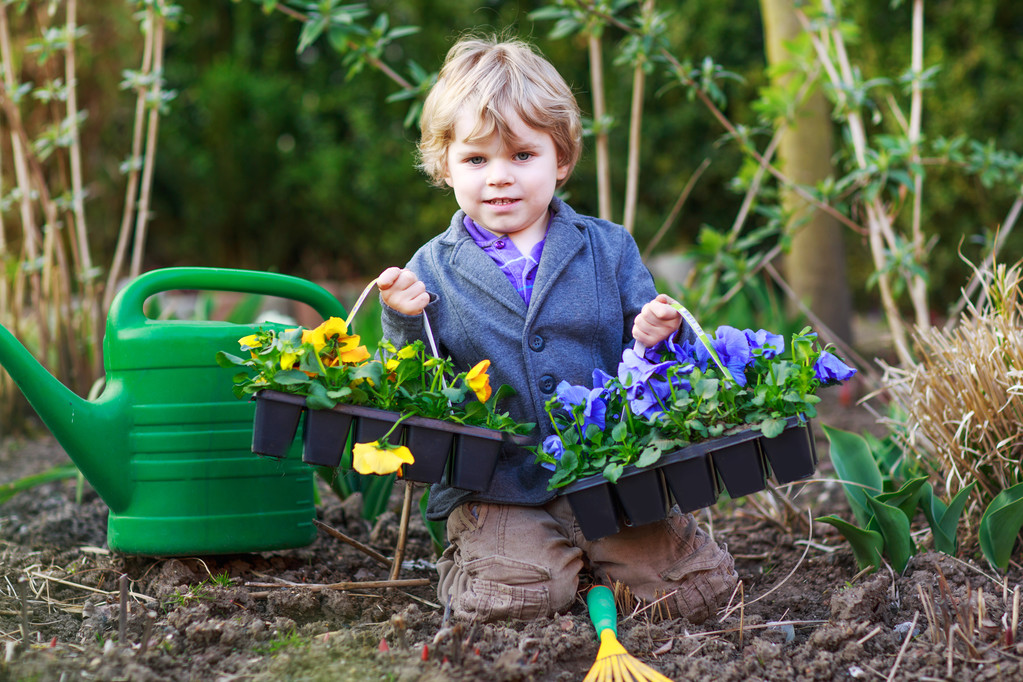Discover effective strategies and tips for teaching gardening to 11-12 year old children.
How to Teach Gardening to 11-12 Year Old Children
Gardening is not only a fun and productive hobby, but it can also be an excellent way to teach important life skills to children. And what better age to start than when they are 11-12 years old, full of curiosity and ready to get their hands dirty? In this article, we will explore various strategies and tips on how to effectively teach gardening to this specific age group. So grab your gardening gloves and let’s dig in!

Understanding the Importance of Gardening for Children
Before we dive into the nitty-gritty of how to teach gardening to 11-12 year old children, let’s take a moment to appreciate the numerous benefits it offers. Gardening not only provides a hands-on learning experience, but it also promotes cognitive development and fosters environmental awareness.
Gardening is a rewarding activity that can bring immense joy and satisfaction to children. As they dig their hands into the soil, plant seeds, and watch their efforts come to life, they develop a deep connection with nature. This connection not only nurtures their love for the outdoors but also instills a sense of responsibility towards the environment.
Benefits of Gardening for Cognitive Development
Did you know that gardening can help enhance cognitive abilities in children? When they engage in gardening activities, they develop critical thinking skills by planning and problem-solving. For example, they learn to analyze the needs of different plants, such as sunlight, water, and soil conditions, and make informed decisions accordingly.
Furthermore, gardening provides an excellent opportunity for children to learn about cause and effect. They observe how their actions, such as watering or fertilizing, directly impact the growth and health of the plants. This hands-on experience helps them understand the concept of responsibility and the consequences of their actions.
Moreover, the sense of accomplishment they feel when nurturing plants to grow provides a boost to their self-esteem. As they witness the fruits of their labor, their confidence grows, and they develop a sense of pride in their abilities. This newfound confidence can have a positive impact on other areas of their lives, such as academics and social interactions.
Additionally, gardening also helps improve their concentration and attention span. As they learn to focus on caring for plants, they become more attentive and develop the ability to stay on task. These skills will benefit them not only in gardening but in various other areas of their lives as well.
Fostering Environmental Awareness Through Gardening
Gardening is a wonderful way to instill a sense of environmental responsibility in children. By getting hands-on experience with nature, they develop a deep appreciation for the environment and learn about the importance of conservation.
Through gardening, children can witness the interconnectedness of all living things. They understand the role of insects, soil, and water in plant growth. For example, they learn about the pollination process and how bees and other insects play a vital role in it. This knowledge empowers them to become responsible stewards of the environment and motivates them to make conscious choices that benefit our planet.
Furthermore, gardening provides an opportunity for children to learn about sustainable practices. They can explore concepts such as composting, rainwater harvesting, and organic gardening methods. By practicing these sustainable techniques, they not only reduce their carbon footprint but also contribute to creating a healthier and more sustainable future.
In conclusion, gardening offers a multitude of benefits for children. It enhances their cognitive development by fostering critical thinking, problem-solving, and concentration skills. Additionally, it nurtures their environmental awareness and instills a sense of responsibility towards the planet. So, let’s encourage our children to get their hands dirty and embark on a gardening journey that will not only enrich their lives but also contribute to a greener and more sustainable world.
Preparing for Your First Gardening Lesson
Now that you understand why gardening is a fantastic teaching tool, it’s time to roll up our sleeves and prepare for your first gardening lesson. Here are a few essential steps to consider before you get started.
Gathering the Necessary Tools and Materials
Every successful gardener needs the right tools, and this applies to young gardeners too! Make sure to gather child-sized gardening tools such as small shovels, rakes, and watering cans. Not only will this make it easier for children to handle, but it will also make them feel more involved and excited about the process.
When selecting tools, consider their durability and ergonomic design. Look for tools with soft-grip handles that are comfortable for small hands to hold. You may also want to invest in tools with bright colors or fun patterns to make them more appealing to children.
In addition to tools, don’t forget to stock up on quality soil, seeds, and plants. Allow children to explore various options and let them choose what they want to grow. By giving them this freedom, you’ll spark their curiosity and encourage ownership of their gardening journey.
When it comes to soil, opt for a nutrient-rich organic mix that will provide a healthy foundation for plants to thrive. Consider involving the children in the process of preparing the soil, teaching them about the importance of proper soil composition and the role it plays in plant growth.
As for seeds and plants, choose a variety that is suitable for your region and climate. This will ensure a higher chance of success and will also teach children about the importance of adapting to their environment. Encourage them to research and learn about the specific needs of the plants they choose, such as sunlight requirements and watering frequency.
Setting Up a Safe and Child-Friendly Gardening Space
Safety should always be a top priority when teaching children anything. Be sure to create a designated gardening area that is free from hazards. Remove any sharp objects, chemicals, or potentially harmful plants. Ensure there is adequate sunlight and water access to promote plant growth.
When choosing a location for your gardening space, consider the proximity to a water source. This will make it easier for children to water their plants and will teach them the importance of proper hydration for plants.
Consider investing in child-sized gardening gloves and knee pads to protect their little hands and knees. Look for gloves that are made from breathable materials and have a good grip to prevent accidents while handling tools or plants. Knee pads will provide cushioning and support, making it more comfortable for children to kneel and work close to the ground.
Also, take the time to explain and enforce basic safety rules, such as staying away from nearby tools and wearing sunscreen when working outside. Teach children about the potential risks associated with gardening, such as thorns, insects, or allergic reactions to certain plants. By educating them about these dangers, you empower them to make informed decisions and take precautions to stay safe.
A safe environment will allow the children to fully immerse themselves in the gardening experience. It will give them the confidence to explore, experiment, and learn from their mistakes. Remember, gardening is not only about growing plants but also about fostering a sense of responsibility, patience, and respect for nature.
Creating an Engaging Gardening Curriculum
Now that you’ve prepared the physical aspects of your gardening lessons, let’s focus on creating a curriculum that is both educational and engaging for 11-12 year old children. Here are some tips to help you strike the right balance.
Incorporating Fun and Educational Gardening Activities
Learning doesn’t have to be boring, especially when it comes to gardening! Infuse your lessons with exciting activities that allow children to learn through play. For example, you could organize a scavenger hunt to help them identify different plants and insects in the garden. Or, you could create a mini-garden competition to inspire friendly rivalry and creative thinking.
Remember, children at this age are naturally curious and thrive when activities are interactive and enjoyable. So, let your imagination run wild and come up with creative ways to make gardening lessons a blast!
Balancing Theory and Practice in Gardening Lessons
While hands-on experience is crucial, it’s equally important to provide children with a solid foundation of gardening knowledge. Take some time during your lessons to explain essential gardening concepts such as photosynthesis, plant life cycles, and soil composition.
However, remember to keep it age-appropriate and avoid overwhelming them with complex theories. Break down information into bite-sized pieces and use relatable examples that they can easily grasp. Consider incorporating visual aids, such as posters or diagrams, to make learning more interactive and engaging.
Teaching Basic Gardening Skills
Now that you’ve set the stage for your gardening lessons, it’s time to teach children the fundamental skills they need to become successful gardeners. Here are a few key areas to focus on.
Introducing Children to Different Types of Plants
Expose children to various types of plants to broaden their botanical knowledge. Teach them about flowers, herbs, vegetables, and fruits. Let them touch and smell different plant species to engage their senses and spark their curiosity.
Encourage them to observe the similarities and differences between plants and ask questions about what they notice. This will not only expand their horticultural vocabulary but also cultivate an appreciation for the incredible diversity of the plant kingdom.
Guiding Children in Planting and Nurturing Seeds
One of the most exciting aspects of gardening is watching plants grow from tiny seeds. Teach children how to properly plant seeds by explaining the importance of depth, spacing, and watering. Show them how to care for their seedlings as they germinate and grow.
Encourage them to keep a gardening journal or take photos to track the progress of their plants. This will give them a sense of responsibility as they witness the direct impact of their efforts on plant growth.
Encouraging Continued Interest in Gardening
Your ultimate goal as a gardening teacher is to inspire a lifelong love for this rewarding hobby. Here are a couple of strategies to keep children interested even after your lessons come to an end.

Setting Up Gardening Projects for Children to Take Home
Assign small gardening projects that children can implement at home. It could be as simple as growing herbs in their kitchen or creating a miniature garden in a container. This will allow them to apply the skills and knowledge they have acquired during their lessons.
Encourage children to share their progress and experiences with you. Celebrate their achievements and offer guidance when needed. By extending the learning beyond the classroom, you’ll ensure that their passion for gardening continues to flourish.
Inspiring a Lifelong Love for Gardening
Finally, share your own love and enthusiasm for gardening with the children. Be their gardening role model and show them how plants can bring beauty, joy, and a sense of tranquility to their lives.
Take the time to explore different aspects of gardening, such as landscaping, floral arrangements, or even making herbal teas from garden-grown herbs. By exposing them to the vast possibilities within the gardening world, you’ll ignite their curiosity and inspire them to continue exploring and learning.
In conclusion, teaching gardening to 11-12 year old children is a rewarding and educational experience. By understanding the benefits of gardening, preparing a safe and child-friendly environment, and creating an engaging curriculum, you can provide children with lifelong skills and a newfound appreciation for the natural world. So let’s get those green thumbs ready and embark on this exciting gardening journey together!



